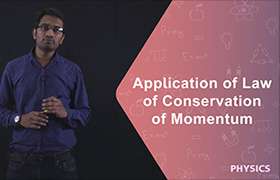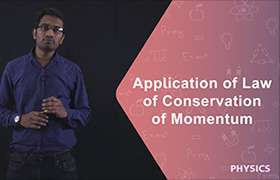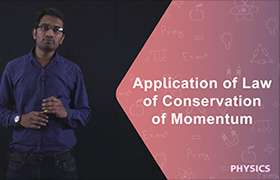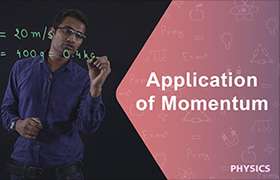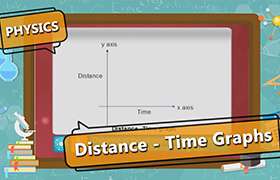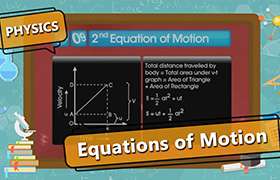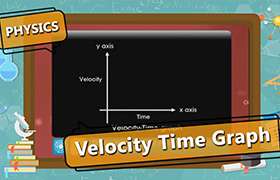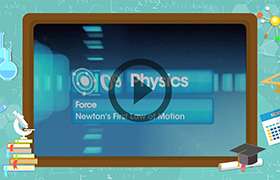CBSE Class 9 Answered
derivation of newton's thied law of motion using the 2 nd law
Asked by shresth.senwal | 03 Aug, 2019, 02:16: PM
Consider an isolated system of two bodies A & B mutually interacting with each other, provided there is no external force acting on the system.
Let FAB, be the force exerted on body B by body A and FBA be the force exerted by body B on A.
Suppose that due to these forces FAB and FBA, dp1/dt and dp2/dt be the rate of the change of momentum of these bodies respectively.
Then, FBA = dp1/dt ---------- (i)
=> FAB = dp2/dt---------- (ii)
Adding equations (i) and (ii), we get,
FBA + FAB = dp1/dt + dp2/dt
⇒ FBA + FAB = d(p1 + p2)/dt
If no external force acts on the system, then
d(p1 + p2)/dt = 0
⇒ FBA + FAB = 0
⇒ FBA = - FAB---------- (iii)
the above equation (iii) represents the Newton's third law of motion (i.e., for every action there is equal and opposite reaction).
Let FAB, be the force exerted on body B by body A and FBA be the force exerted by body B on A.
Suppose that due to these forces FAB and FBA, dp1/dt and dp2/dt be the rate of the change of momentum of these bodies respectively.
Then, FBA = dp1/dt ---------- (i)
=> FAB = dp2/dt---------- (ii)
Adding equations (i) and (ii), we get,
FBA + FAB = dp1/dt + dp2/dt
⇒ FBA + FAB = d(p1 + p2)/dt
If no external force acts on the system, then
d(p1 + p2)/dt = 0
⇒ FBA + FAB = 0
⇒ FBA = - FAB---------- (iii)
the above equation (iii) represents the Newton's third law of motion (i.e., for every action there is equal and opposite reaction).
Answered by Thiyagarajan K | 03 Aug, 2019, 03:47: PM
Application Videos
Concept Videos
CBSE 9 - Physics
Asked by mailtoparvathyprajith | 08 Feb, 2024, 06:45: PM
CBSE 9 - Physics
Asked by mailtoparvathyprajith | 08 Feb, 2024, 12:32: PM
CBSE 9 - Physics
Asked by mailtoparvathyprajith | 08 Feb, 2024, 12:13: PM
CBSE 9 - Physics
Asked by mailtoparvathyprajith | 06 Feb, 2024, 09:50: PM
CBSE 9 - Physics
Asked by mailtoparvathyprajith | 06 Feb, 2024, 09:10: PM
CBSE 9 - Physics
Asked by mailtoparvathyprajith | 06 Feb, 2024, 09:00: PM
CBSE 9 - Physics
Asked by mailtoparvathyprajith | 06 Feb, 2024, 08:44: PM
CBSE 9 - Physics
Asked by mailtoparvathyprajith | 06 Feb, 2024, 08:24: PM
CBSE 9 - Physics
Asked by sadhanaasadhanaa67 | 04 Feb, 2024, 12:27: PM

